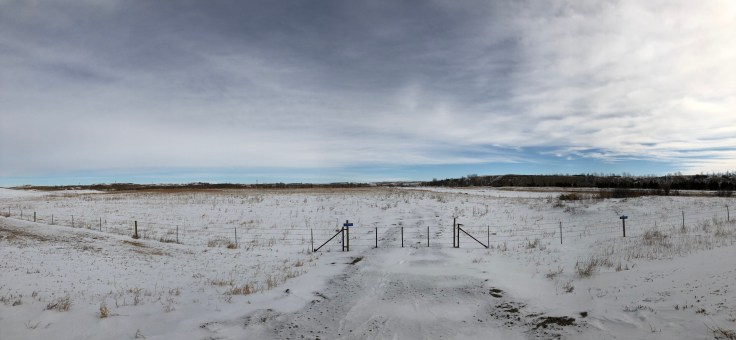Sacred Stone Camp was the first site for water protectors who went to try and stop the construction of the Dakota Access Pipeline (DAPL). Sacred Stone Camp is a few miles North of Cannonball, ND on the Standing Rock Sioux Reservation. The pipeline was approved to be built on land considered sacred by eight tribes who signed the Fort Laramie Treaty of 1851. Besides running through sacred grounds, the pipeline would also run under the Missouri River, endangering the water supply for many downriver. A Google search of “DAPL Leak” confirms that leaks have sprung up since the pipeline became operational June 1, 2017.

Sacred Stone eventually become one of several sites where Native American and Indigenous people from around the world would stand in solidarity against DAPL. The clash between private security hired by DAPL and the water protectors sparked outrage on social media. For many like me who couldn’t just pack up and drive to Sacred Stone, we were left to witness the events unfold on Facebook.
On a cold February Sunday night, I drove through the beautiful rolling prairie hills of North Dakota, and I saw the sign: “Entering Standing Rock Sioux Reservation”. My companion, Mike, and I stopped near the sign to snap a few selfies. It still felt like hallowed ground. The teepees, temporary shelters, and flags from many Nations may have been gone, but a sense of pride and hope lingered in the crisp, cool air. If only it were a year ago when the water protectors were in ceremony and having to stand toe to toe with the Government. My youth is quickly fleeting, but I still have to ask myself, would I have stood my ground against the US Government?
In February of 2018, exactly one year after the Cheyenne River Sioux tribe (and later, the Standing Rock Tribe) asked the U.S. District court to issue an order to block construction of the last pieces of the pipeline, the government presented plaques for “officers across America who answered a call from the National Sheriff’s Association to come north and help crush the Standing Rock protests” (Splinter.com). Honoring officers who “crush” Native American resistance is nothing new. After the massacre at Wounded Knee where an estimated 150 Native American men, women and children were murdered, twenty US soldiers who killed indiscriminately were awarded the Congressional Medal of Honor. It is astonishing that the medals have not been rescinded.
While in North Dakota, our tour guide Bobby GreyEagle showed us his home community in Solen, ND. Bobby, his mother, and stepfather help run a local ministry called Good Heart Community Center. It is a beacon of hope for the local Native tribes in and around Standing Rock. Bobby was kind enough to show Mike and me around the protest sites and gave us a quick history of where it all started. Bobby often visited Sacred Stone Camp and brought friends to the site. In his best storyteller voice, Bobby conveyed the immense pride he felt when he was at camp, especially when the canoes of the coastal tribes showed up. By protocol the coastal tribes did not just come onto the land, but stopped and first asked permission to come onto the land.
In a “historic” show of interfaith solidarity, 500 clergy members prayed along the banks of North Dakota’s Cannonball River on Thursday [Nov 3, 2016] where they “bore witness with the Standing Rock Sioux Nation,” which has faced intimidation, violence, and arrests for protecting their sacred land and water supply from the threats of a massive oil pipeline (CommonDreams.org).
One year after the “Protest” the oil is flowing through the black snake [pipeline]. The local tribes are still fighting for their land and their rights, and they are hoping the promises of the Government will come to fruition. Native people are often asked to “forget the past, and move on,” but how can we forget when the promises of the Government are not kept? To where can we move when the land we once stewarded is stolen? Forgetting our past is not a traditional value. Looking to our past, to the history of our people and wisdom of our ancestors, is how we move forward into the future.





Memories flood back – my wife and I were there a year ago with Bobby. We attended a gathering at the Standing Rock Casino. I, as English/Scotc-Irish, am on a journey of reconciliation because of what my forefathers did to your people. “Heal not the wounds lightly, saying peace, peace, when there is no peace.”
LikeLike